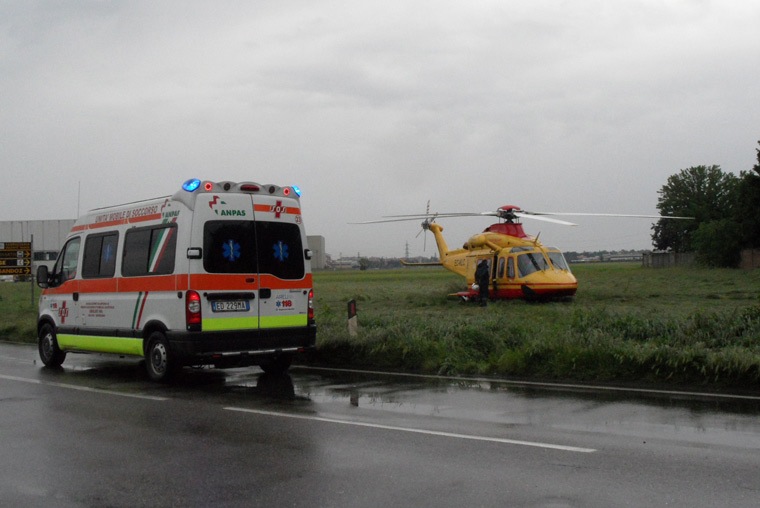
Ambulance or helicopter? Which is the best way to transport a trauma patient?
A young patient involved in a car accident found him breathing and with no mention of head trauma or evisceration. He has an open fracture and is losing much blood. Which is the best way to transport a trauma patient?
Ambulance or helicopter? 22 years old male hit from a car on the roadside of an urban area. The ground EMS ambulance (physician, nurse staffed), dispatched on scene, find the trauma patient alert, oriented and spontaneously breathing. His vitals are:
GCS 15 , RR 20, SaO2 95, HR 85, SBP 110
No mention of head trauma.
Chest no sign of trauma, bilateral and equal expansion and air entry.
Pulse is strong.
He has a profound laceration with loss of substance but not evisceration on left flank and no external bleeding from the wound.
The abdomen is painful and resistant to palpation in left flank.
There is an open fracture to left tibia (VNS 9).
The ground team, after the primary survey, activates the local medical helicopter. The place is 10 k from a level 1 Trauma Center on a local road in an urban area and the helicopter is at 10 minutes flight distance. There is a safe landing space at 500 mt from the point of the accident. A Level 2 hospital (general surgery, orthopedics, anesthesiologist, radiology and laboratory 24/7) is at 2 km distance from the scene. Is this a proper activation for HEMS?
What international litterature says about advantages of air medical service vs ground medical service?
Continue on MEDEST118: HEMS vs GEMS. By ground or by air: which is the best way to take care of traumatized patients
READ ALSO
Pioneering Patient Transport Vehicle Joins Yorkshire Ambulance Service
Blood transfusion in trauma scenes: How it works in Ireland
10 Steps to perform a Correct Spinal Immobilization of a Trauma Patient
What to know about the neck trauma in emergency?
The Need For A Trauma Registry In Bhutan



